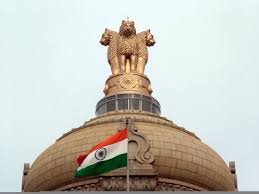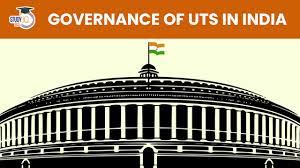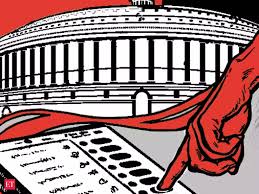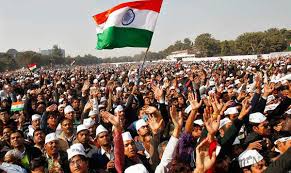
The Framework of Indian Governance
Introduction to the Indian Governance System
Blog Sponsored by PausSlot

The system of Indian governance is a monumental and complex enterprise, tasked with administering the world’s most populous democracy. It is a structure built on a visionary constitution, designed to manage immense diversity while striving for equitable development and social justice. The framework of Indian governance is a unique blend of principles borrowed from across the globe, yet meticulously adapted to the nation’s historical context and societal needs. At its core, it is a parliamentary democracy and a federal republic, where power is derived from the people and distributed between a central union government and various state governments. Understanding the mechanics of Indian governance is essential to comprehend how a nation of such vast scale and variety functions, progresses, and addresses its multifaceted challenges. The robustness of this system has been tested time and again, proving its resilience and capacity for evolution.
The foundation of modern Indian governance was laid on January 26, 1950, with the adoption of the Constitution of India. This document is not merely a legal framework but a moral compass for the nation, establishing India as a sovereign, socialist, secular, and democratic republic. It guarantees fundamental rights to its citizens and outlines directive principles for state policy, setting the goals for a just society. The architecture of Indian governance, as per the constitution, is based on a tripartite system, separating power among the legislature, the executive, and the judiciary. This separation, along with a system of checks and balances, is crucial for preventing the concentration of authority and protecting democratic values. The preamble to the constitution perfectly encapsulates the ultimate objectives of the Indian governance system, aiming to secure justice, liberty, equality, and fraternity for all its citizens.
The scale of Indian governance is staggering. It operates at multiple levels—national, state, district, and local—each with its own set of responsibilities and administrative machinery. From formulating foreign policy and managing the national economy to ensuring the delivery of essential services at the village level, the scope of Indian governance is all-encompassing. This multi-tiered system is designed to bring administration closer to the people, though it often grapples with challenges of efficiency, corruption, and implementation gaps. Despite these hurdles, the system of Indian governance has demonstrated a remarkable ability to endure, adapt, and innovate, continually seeking to fulfill the aspirations of its billion-plus citizens. The subsequent sections will delve deeper into the constitutional pillars, federal nature, and key mechanisms that define this intricate system.
The Constitutional Bedrock of the Indian State

The Constitution of India is the supreme and unwavering bedrock of all Indian governance. It is the longest written constitution of any sovereign country in the world, a detailed document that meticulously outlines the structure, powers, and limitations of the government. The constitution provides the ultimate blueprint for Indian governance, defining the relationship between the citizen and the state, and between the different organs of the state. Its provisions are paramount, and any law or government action that violates the constitution is deemed invalid. The creation of this document was a deliberate and inclusive process undertaken by the Constituent Assembly, whose members brought together the best features of other constitutions while ensuring it reflected Indian ideals and realities. The constitution’s endurance and adaptability, through numerous amendments, underscore its central role in Indian governance.
One of the most critical functions of the constitution in Indian governance is the enshrinement of Fundamental Rights and Directive Principles of State Policy. The Fundamental Rights, enshrined in Part III of the constitution, are justiciable rights that protect individuals from the arbitrary exercise of state power. These include the right to equality, freedom of speech and expression, and the right to constitutional remedies. They act as a guarantor of individual liberty within the framework of Indian governance. Conversely, the Directive Principles of State Policy, contained in Part IV, are non-justiciable guidelines for the government to follow when framing laws and policies. They aim to establish a social and economic democracy, directing the state to strive for the welfare of the people, secure a social order, and minimize inequalities. The interplay between these two sets of provisions guides the legislative and executive agenda in Indian governance.
Furthermore, the constitution establishes the fundamental architecture of the government through its provisions on federalism, citizenship, and the amendment process. It delineates the legislative, executive, and financial powers between the Union and the states via the Union List, State List, and Concurrent List in the Seventh Schedule. This distribution is a cornerstone of the federal Indian governance model. The constitution also details the provisions for citizenship, defining who belongs to the Indian political community. Finally, the constitution is not a rigid document; it possesses a built-in flexibility through the amendment process detailed in Article 368. This allows the system of Indian governance to evolve and respond to changing circumstances, ensuring its continued relevance. However, the “basic structure” doctrine, established by the Supreme Court, ensures that the fundamental identity of the constitution cannot be altered by any amendment.
The Union Government: Structure and Functions
At the apex of the Indian governance structure sits the Union Government, also known as the Central Government, located in New Delhi. It handles matters of national importance such as defence, foreign affairs, currency, and inter-state trade. The structure of the Union Government, as defined by the Constitution, follows the British-model parliamentary system, where the executive is drawn from and responsible to the legislature. The Union Government is a complex machinery comprising three key institutions: the Parliament, the President, and the Council of Ministers headed by the Prime Minister. The effective functioning of this triumvirate is essential for smooth Indian governance at the national level, setting the policy direction for the entire country.
The Parliament of India is the supreme legislative body, a bicameral house consisting of the President and two chambers: the Lok Sabha (House of the People) and the Rajya Sabha (Council of States). The Lok Sabha is the directly elected lower house, where members represent parliamentary constituencies from across the nation. It is the primary house for financial matters and is the body from which the Council of Ministers derives its strength. The Rajya Sabha, or the upper house, represents the states and union territories, providing a federal balance to the Indian governance system. Its members are elected by the state legislative assemblies. The Parliament’s primary function is law-making, and it also exercises control over the executive through mechanisms like question hours, debates, and parliamentary committees. The legislative process often involves intricate deliberation between the two houses, reflecting the complex nature of Indian governance.
The executive arm of the Union Government consists of the President, the Vice-President, and the Council of Ministers headed by the Prime Minister. The President is the constitutional head of the state and the supreme commander of the armed forces, acting on the advice of the Council of Ministers. While the President’s powers are largely ceremonial, the office holds significant reserve powers that can be crucial during political instability. The real executive power in Indian governance is vested in the Prime Minister and the Council of Ministers. The Prime Minister is the head of the government, the leader of the majority party or coalition in the Lok Sabha, and the chief advisor to the President. The Prime Minister’s Office (PMO) has grown into a powerful institution, centralizing policy coordination and implementation, thereby shaping the contemporary landscape of Indian governance.
The State Governments and Their Administrative Role

The federal nature of Indian governance is most visibly operationalized through the State Governments. India is a union of states, and each state has its own government, mirroring the structure of the Union Government. This tier of Indian governance is responsible for a vast range of subjects listed in the State List of the Constitution, including public order, police, public health, agriculture, and land rights. The effective administration of these critical areas directly impacts the daily lives of citizens, making state-level Indian governance a crucial determinant of development outcomes and quality of life. The performance of state governments often varies widely, reflecting local leadership, administrative capacity, and political stability.
A State Government is structured with a Governor, a Chief Minister and a Council of Ministers, and a State Legislature. The Governor is the nominal head of the state, appointed by the President of India, and functions as the representative of the central government in the state. The real executive power rests with the Chief Minister, who is the leader of the majority party or coalition in the State Legislative Assembly, and their Council of Ministers. They are responsible for the day-to-day administration and policy implementation within the state. The State Legislature can be unicameral (having only the Legislative Assembly) or bicameral (having both a Legislative Assembly and a Legislative Council). The legislature enacts laws on subjects under the State List and the Concurrent List, demonstrating the legislative autonomy within the framework of Indian governance.
The relationship between the Union and State Governments is a dynamic and sometimes contentious aspect of Indian governance. While the constitution clearly divides powers, there are numerous areas of overlap and interdependence. The central government influences state Indian governance through financial allocations, as it controls major revenue sources. Centrally Sponsored Schemes (CSS) are a key tool through which the union government directs policy in areas that are technically under the state list, such as health and education. This often leads to debates about fiscal federalism and the autonomy of states. Furthermore, the President’s Rule, under Article 356, allows the central government to take direct control of a state’s administration in case of a breakdown of constitutional machinery, a provision that has been used politically in the past. This continuous negotiation of power defines the federal character of Indian governance.
The Indian Judiciary: Guardian of the Constitution
The judiciary in India forms the third pillar of Indian governance and acts as the ultimate interpreter of the Constitution and the guardian of fundamental rights. Its independence from the executive and the legislature is a cornerstone of Indian democracy, ensuring that the rule of law prevails. The Indian judiciary is structured in a hierarchical manner, with the Supreme Court at the apex, followed by High Courts in each state, and a subordinate judiciary at the district and lower levels. This integrated system allows for a unified and consistent application of laws across the country. The power of judicial review, which allows courts to strike down laws and executive actions that violate the Constitution, is the most potent weapon in the judiciary’s arsenal, making it a powerful arbiter in the system of Indian governance.
The Supreme Court of India, located in New Delhi, is the highest court of appeal and the final interpreter of the Constitution. Its rulings are binding on all other courts in the country. Apart from hearing appeals in civil and criminal cases, the Supreme Court has original, advisory, and writ jurisdictions. It is also the ultimate guardian of the Fundamental Rights of citizens, and individuals can directly approach it under Article 32 for the enforcement of these rights. The Supreme Court has played a transformative role in Indian governance through its landmark judgments. The creation of the “Basic Structure” doctrine in the Kesavananda Bharati case, which limits the Parliament’s power to amend the Constitution, is a prime example of the judiciary’s profound influence on the constitutional framework of Indian governance.
Below the Supreme Court, each state has a High Court, which serves as the highest court of appeal for that state. The High Courts also have the power to issue writs for the enforcement of fundamental rights and for other purposes. At the grassroots level, the district and subordinate courts handle the bulk of litigation, dealing with civil and criminal cases. A significant innovation in Indian governance has been the development of Public Interest Litigation (PIL), which relaxed the traditional rule of locus standi. This allowed the courts to take up cases based on letters or petitions filed by public-spirited individuals or organizations on behalf of those who are unable to approach the court themselves. Through PIL, the judiciary has addressed issues of public accountability, environmental protection, and human rights, actively shaping the discourse on social justice within Indian governance.
The Three Tiers: Understanding Local Self-Governance
A revolutionary step in deepening democracy and decentralizing Indian governance was the constitutionalization of local self-government through the 73rd and 74th Constitutional Amendment Acts in 1992. These amendments formally established a third tier of Indian governance in rural and urban areas, aiming to take democracy to the grassroots level and ensure greater participation of people in the development process. The 73rd Amendment provided for the creation of Panchayati Raj Institutions (PRIs) in rural areas, while the 74th Amendment established Urban Local Bodies (ULBs) in cities and towns. This structural change was intended to make Indian governance more responsive, accountable, and inclusive by transferring powers and responsibilities to locally elected representatives.
In rural India, the Panchayati Raj system is typically a three-tier structure consisting of the Gram Panchayat at the village level, the Panchayat Samiti at the block level, and the Zila Parishad at the district level. These bodies are responsible for planning and implementing schemes related to economic development, social justice, and infrastructure at the local level. The amendments mandated the reservation of seats for Scheduled Castes (SCs), Scheduled Tribes (STs), and women, leading to the political empowerment of marginalized sections. This has been a transformative aspect of local Indian governance, allowing for more equitable distribution of resources and a more representative administration. The Gram Sabha, a village assembly comprising all adult members, acts as a forum for direct democracy, approving development plans and exercising social audit.
In urban areas, Municipal Corporations, Municipal Councils, and Nagar Panchayats constitute the Urban Local Bodies. These institutions are tasked with the crucial functions of urban planning, provision of civic amenities, and public health. They are responsible for water supply, sanitation, waste management, road maintenance, and regulation of land use. Despite being endowed with constitutional status, ULBs often face challenges related to financial dependency on state governments, lack of functional autonomy, and inadequate capacity. However, successful models of urban Indian governance in cities like Surat and Pune demonstrate the potential of empowered local bodies to transform urban landscapes. The effectiveness of this third tier is critical for achieving sustainable development goals and improving the quality of life for a significant portion of India’s population, making it an indispensable component of modern Indian governance.
The Steel Frame: The Role of the Civil Services
Often described as the “steel frame” of India, the civil services form the permanent executive branch that implements policies and manages the day-to-day administration of the country. While politicians, who form the political executive, provide the direction and vision, it is the civil services that ensure the continuity and stability of Indian governance regardless of political changes. The civil servants are recruited through a highly competitive and rigorous examination conducted by the Union Public Service Commission (UPSC). This merit-based system is designed to select the most capable individuals to administer a country of immense diversity and complexity. The civil services are crucial for the effective translation of laws and policies into actionable outcomes on the ground, making them the backbone of Indian governance.
The civil services in India are divided into two main categories: All India Services and Central Civil Services. The All India Services, namely the Indian Administrative Service (IAS), Indian Police Service (IPS), and Indian Forest Service (IFoS), are unique to Indian governance. Officers from these services are recruited and trained by the central government but serve under both the state and central governments, providing an administrative link between the two tiers. The IAS, in particular, holds pivotal positions across the administration, from serving as the District Magistrate at the district level to Secretaries heading central government ministries. This system ensures a national perspective is integrated into state administration and vice-versa. The Central Civil Services, on the other hand, function under the exclusive jurisdiction of the union government and are categorized into Group A, B, C, and D, handling specialized functions.
Despite their critical role, the civil services in India face numerous challenges that impact the efficiency of Indian governance. These include political interference, a culture of excessive rule-following (red tape), systemic corruption, and a generalist nature that sometimes lacks specialized domain expertise. There is an ongoing debate about reforming the civil services to make them more agile, accountable, and performance-oriented. Initiatives like the Mission Karmayogi aim to build a future-ready civil service with a focus on capacity building. The relationship between the civil servant and the political executive is a delicate one, requiring a balance between offering impartial advice and faithfully implementing the government’s policies. The integrity, competence, and commitment of the civil services are, therefore, directly proportional to the quality and effectiveness of Indian governance.
Policy Formulation and Implementation Mechanisms
The process of policy formulation and implementation is the central nervous system of Indian governance. It is through this process that the government’s vision and electoral promises are translated into concrete programs and actions that affect the citizenry. Policy-making in India is a complex, multi-layered process that involves various stakeholders, including political executives, civil servants, experts, and increasingly, civil society organizations. The process typically begins with agenda-setting, where a problem is identified and recognized as requiring government intervention. This is followed by policy formulation, where various alternatives are analyzed, and a specific course of action is designed. This stage is crucial for setting the strategic direction of Indian governance in any particular sector, be it education, health, or infrastructure.
Once a policy is formulated and approved by the competent authority (like the Cabinet), it moves to the implementation stage. This is often the most challenging phase of Indian governance, where the theoretical design of a policy meets the practical realities on the ground. Implementation involves translating the policy into actionable schemes, allocating financial resources, and entrusting the responsibility to specific departments and agencies. This stage requires meticulous coordination between different levels of government—central, state, and local. The success of a policy heavily depends on the administrative capacity, financial resources, and political will at the implementation level. Flagship initiatives like the Mahatma Gandhi National Rural Employment Guarantee Act (MGNREGA) or the Ayushman Bharat health scheme demonstrate the scale and ambition of policy implementation within Indian governance, but they also highlight the challenges of last-mile delivery.
The final, and often neglected, stage in the cycle is monitoring and evaluation. Effective Indian governance requires robust mechanisms to track the progress of policies, assess their impact, and make necessary mid-course corrections. This is done through government reports, audits by the Comptroller and Auditor General (CAG), and independent evaluations. The increasing use of technology in Indian governance, through platforms like the Digital India initiative, has significantly improved data collection and monitoring capabilities. For instance, the Direct Benefit Transfer (DBT) system has streamlined the delivery of welfare subsidies, reducing leakages and improving efficiency. A continuous feedback loop from evaluation back to formulation is essential for evidence-based policymaking, ensuring that the machinery of Indian governance learns, adapts, and improves its service delivery to the people.
E-Governance and Digital Transformation in India
The advent of information and communication technology has ushered in a transformative era for Indian governance. E-governance, which involves the use of digital tools to enhance the delivery of government services, improve transparency, and empower citizens, has become a central pillar of administrative reform in India. The national flagship program, “Digital India,” launched in 2015, aims to transform the entire ecosystem of Indian governance by making government services available to citizens electronically, improving digital infrastructure, and increasing internet connectivity. This digital push is fundamentally altering the citizen-government interface, making interactions faster, cheaper, and more accountable. The vision is to create a digitally empowered society and a knowledge economy, where technology is a key enabler of effective Indian governance.
Several landmark initiatives exemplify the success of e-governance in India. The Aadhaar project, the world’s largest biometric identification system, has provided a unique digital identity to over a billion residents, serving as a foundation for targeted service delivery. Integrated with the Direct Benefit Transfer (DBT) scheme, it has revolutionized the welfare system by transferring subsidies directly into beneficiaries’ bank accounts, thereby eliminating intermediaries and reducing corruption. The Unified Mobile Application for New-age Governance (UMANG) app provides a single platform for accessing a wide range of central and state government services. The implementation of the Goods and Services Tax (GST) was supported by a sophisticated digital platform, the GST Network, which simplified the tax structure and improved compliance. These innovations are making Indian governance more efficient and citizen-centric.
However, the digital transformation of Indian governance is not without its challenges. The digital divide between urban and rural areas, and between different socioeconomic groups, risks excluding the most vulnerable populations. Concerns about data privacy and the security of digital infrastructure are paramount, especially in the absence of a comprehensive data protection law. There is also a need for massive capacity building within the government to adapt to new technologies. Despite these hurdles, the trajectory is clear: technology will continue to be a powerful driver of change in Indian governance. The future lies in leveraging emerging technologies like artificial intelligence and blockchain for smarter policy analysis, predictive governance, and creating a more responsive and transparent administrative system for all citizens.
Challenges and Future Directions for Indian Governance
The system of Indian governance, while robust in its foundational structure, grapples with a set of persistent and emerging challenges that test its efficacy and legitimacy. Corruption remains a deep-seated problem, siphoning off public resources and eroding public trust in institutions. While initiatives like the Right to Information (RTI) Act have empowered citizens to hold the government accountable, the fight against corruption requires sustained political will and systemic reforms. Another significant challenge is the issue of implementation gaps. There is often a wide chasm between policy intentions announced in New Delhi and the actual delivery of services at the village level. This “last-mile” problem in Indian governance is attributed to bureaucratic inertia, inadequate infrastructure, and sometimes, a lack of coordination between different tiers of government.
Social inequality and the politics of identity also pose a formidable challenge to equitable Indian governance. Despite constitutional guarantees and affirmative action, disparities based on caste, religion, and gender persist and often influence access to public services and justice. Ensuring that the benefits of growth and development reach the most marginalized sections of society is a critical test for the system. Furthermore, the increasing criminalization of politics and the influence of money in elections undermine the purity of the democratic process, which is the very source of authority for Indian governance. Addressing these issues requires comprehensive electoral reforms and stronger institutional checks to ensure that governance is clean and representative.
Looking ahead, the future of Indian governance will be shaped by its ability to adapt and reform. Key areas of focus include strengthening local self-governance by devolving more powers and finances to Panchayats and Municipalities. Administrative reforms aimed at making the civil service more performance-oriented and accountable are crucial. Embracing technology must continue, but with a parallel focus on bridging the digital divide and safeguarding citizen privacy. Ultimately, the resilience of Indian governance lies in its democratic ethos and the active participation of its citizens. An informed and engaged citizenry, demanding accountability and transparency, is the most powerful force for ensuring that the system of Indian governance fulfills its constitutional promise of justice, liberty, equality, and fraternity for every Indian.



